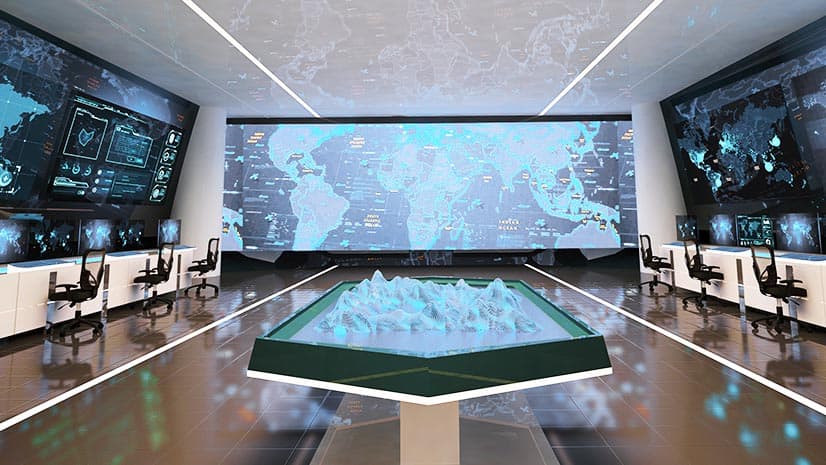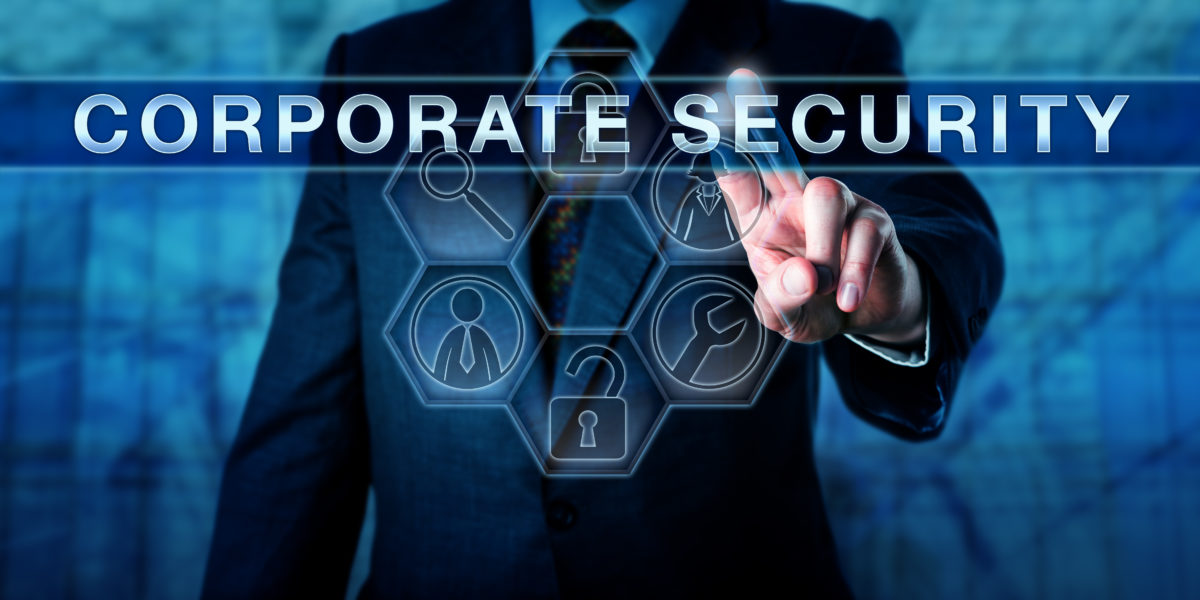From Cybersecurity to Physical Measures: Reinforcing Business Safety And Security in a Transforming Globe
In today's rapidly advancing digital landscape, the importance of business security can not be overemphasized. As cyber threats end up being common and significantly sophisticated, companies must go beyond traditional cybersecurity procedures to guard their operations and properties - corporate security. This is where the combination of physical safety and security steps ends up being critical. By incorporating the toughness of both cybersecurity and physical protection, firms can create a comprehensive protection approach that deals with the varied variety of threats they encounter. In this conversation, we will certainly check out the changing risk landscape, the demand to incorporate cybersecurity and physical security, the execution of multi-factor authentication steps, the value of employee recognition and training, and the adjustment of security actions for remote workforces. By taking a look at these vital locations, we will obtain beneficial understandings right into how companies can enhance their company protection in an ever-changing globe.
Recognizing the Altering Risk Landscape
The evolving nature of the contemporary globe necessitates a detailed understanding of the altering hazard landscape for effective business security. It is critical for organizations to stay notified and adjust their safety gauges to address these progressing threats.
One key aspect of comprehending the altering risk landscape is acknowledging the various kinds of hazards that companies deal with. In addition, physical threats such as burglary, criminal damage, and company reconnaissance continue to be widespread problems for organizations.
Tracking and assessing the threat landscape is important in order to identify potential dangers and vulnerabilities. This involves remaining updated on the current cybersecurity patterns, evaluating threat knowledge records, and performing routine risk analyses. By recognizing the transforming risk landscape, companies can proactively carry out appropriate safety and security measures to alleviate dangers and safeguard their assets, reputation, and stakeholders.
Integrating Cybersecurity and Physical Protection
Integrating cybersecurity and physical security is crucial for thorough business defense in today's electronic and interconnected landscape. As organizations progressively rely on modern technology and interconnected systems, the limits in between physical and cyber risks are coming to be blurred. To properly protect versus these risks, an alternative approach that integrates both cybersecurity and physical protection steps is crucial.
Cybersecurity focuses on securing digital possessions, such as systems, networks, and information, from unauthorized gain access to, disturbance, and theft. Physical safety and security, on the various other hand, encompasses procedures to secure physical possessions, individuals, and centers from threats and vulnerabilities. By integrating these two domains, companies can resolve susceptabilities and threats from both digital and physical angles, consequently boosting their total security position.
The combination of these two self-controls enables for an extra thorough understanding of security risks and enables a unified reaction to events. For example, physical gain access to controls can be improved by integrating them with cybersecurity procedures, such as two-factor authentication or biometric identification. Cybersecurity measures can be matched by physical protection steps, such as monitoring video cameras, alarm systems, and safe and secure access points.

Applying Multi-Factor Authentication Actions
As organizations progressively prioritize thorough protection actions, one reliable technique is the implementation of multi-factor verification measures. Multi-factor authentication (MFA) is a safety approach that needs individuals to give multiple types of identification to access a system or application. This strategy includes an extra layer of security by combining something the individual understands, such as a password, with something they have, like a safety and security or a finger print token.
By carrying out MFA, organizations can substantially boost their safety stance - corporate security. Traditional password-based verification has its limitations, as passwords can be easily jeopardized or failed to remember. MFA minimizes these dangers by including an extra authentication factor, making it harder for unapproved individuals to access to sensitive info
There are a number of types of from this source multi-factor authentication techniques offered, including biometric authentication, SMS-based verification codes, and equipment symbols. Organizations require to evaluate their particular requirements and choose the most appropriate MFA service for their needs.
Nonetheless, the implementation of MFA need to be carefully planned and performed. It is vital to strike an check my source equilibrium in between safety and use to avoid individual stress and resistance. Organizations needs to additionally consider potential compatibility concerns and give appropriate training and assistance to guarantee a smooth transition.
Enhancing Employee Recognition and Training
To reinforce corporate safety and security, companies should focus on boosting staff member recognition and training. In today's swiftly evolving danger landscape, employees play a critical duty in securing an organization's sensitive details and possessions. Sadly, several security violations happen due to human error or absence of recognition. Therefore, companies require to invest in thorough training programs to educate their staff members about prospective threats and the finest techniques for reducing them.
Reliable staff member awareness and training programs ought to cover a broad array of subjects, consisting of information defense, phishing strikes, social engineering, password health, and click now physical safety actions. These programs should be tailored to the specific needs and obligations of different worker functions within the company. Routine training simulations, sessions, and workshops can aid staff members create the essential abilities and expertise to react and determine to safety dangers successfully.
Furthermore, companies need to motivate a culture of protection awareness and provide recurring updates and tips to keep staff members educated regarding the current hazards and reduction techniques. This can be done via interior interaction channels, such as e-newsletters, intranet websites, and e-mail campaigns. By cultivating a security-conscious workforce, companies can substantially decrease the chance of safety incidents and secure their important properties from unauthorized accessibility or compromise.

Adapting Protection Measures for Remote Workforce
Adapting business safety actions to accommodate a remote workforce is vital in making sure the defense of delicate details and assets (corporate security). With the enhancing pattern of remote job, companies need to apply ideal security steps to reduce the dangers connected with this new means of functioning
One crucial aspect of adjusting protection measures for remote job is developing safe and secure interaction networks. Encrypted messaging platforms and online private networks (VPNs) can help protect sensitive info and prevent unapproved gain access to. Furthermore, companies must implement making use of strong passwords and multi-factor authentication to boost the security of remote accessibility.
One more essential consideration is the implementation of safe and secure remote gain access to services. This involves giving staff members with protected access to company resources and data via online desktop framework (VDI), remote desktop methods (RDP), or cloud-based options. These innovations ensure that delicate info remains protected while making it possible for workers to execute their functions effectively.

Lastly, extensive safety recognition training is essential for remote workers. Training sessions must cover ideal techniques for securely accessing and handling sensitive information, identifying and reporting phishing attempts, and preserving the general cybersecurity health.
Final Thought
In conclusion, as the threat landscape continues to evolve, it is important for companies to reinforce their security measures both in the cyber and physical domain names. Integrating cybersecurity and physical safety, implementing multi-factor authentication procedures, and improving employee awareness and training are essential steps towards attaining robust corporate safety and security.
In this conversation, we will certainly check out the transforming threat landscape, the demand to integrate cybersecurity and physical protection, the application of multi-factor authentication actions, the value of worker awareness and training, and the adjustment of security actions for remote workforces. Cybersecurity actions can be matched by physical security procedures, such as surveillance cams, alarms, and safe and secure gain access to factors.
As organizations increasingly prioritize comprehensive security procedures, one reliable method is the implementation of multi-factor verification steps.In final thought, as the threat landscape continues to progress, it is essential for companies to reinforce their security determines both in the cyber and physical domain names. Incorporating cybersecurity and physical protection, implementing multi-factor authentication procedures, and boosting staff member recognition and training are important steps towards accomplishing durable business protection.